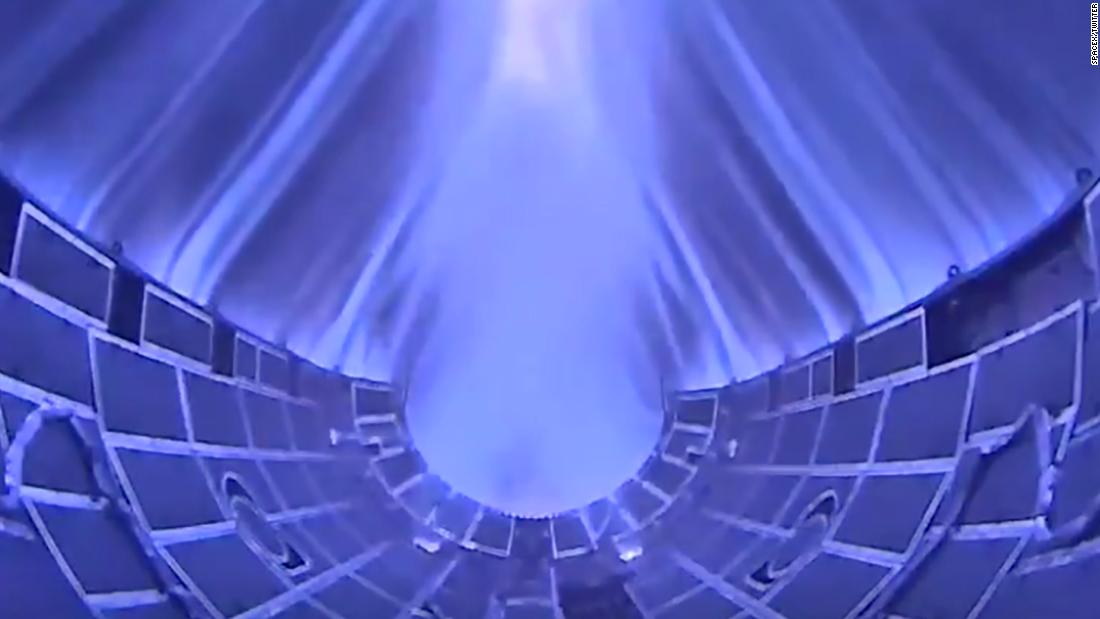
The maneuver last month marked the first time after a launch that a piece of the rocket's cone, which is also called a fairing, was recovered. The fairing guided itself into a giant net hoisted up by a crew boat. SpaceX has been trying to do this for more than a year.
The company shared some footage this week from a camera on board the fairing during its descent. The video shows a stream of neon-blue light flowing around the object as it falls back to Earth after reaching a speed more than nine times the speed of sound.
"Friction heats up particles in the atmosphere, which appear bright blue in the video," SpaceX said in a tweet that included the video.
Also visible in the footage is a parachute — shaped like a giant stick of gum — that the fairing deployed.
A second video captured by a camera aboard the net-wielding crew boat, named Ms. Tree, shows one of the fairing halves land gently on its target.
The fairing rests on the top of the rocket, and it acts as a shield for satellites that SpaceX launches for its customers. Once the rocket is in space, it splits into two and falls away. After most rocket launches, the fairing halves are left to plummet back to Earth, where the ocean becomes their graveyard.
SpaceX's rocket fairings costs about $6 million, CEO Elon Musk has said.
And as he once put it: If "you had $6 million in cash on a pallet flying through the air, and it's going to smash into the ocean, would you try to recover it? Yes. Yes, you would."
The company has always said it wants to reuse as much of its hardware as possible in order to drive down launch costs. But recovering and reusing a fairing had never been done before. SpaceX tried numerous different iterations of its fairing recovery plan before last month's success.
Recovering and reusing parts of its rockets is at the core of SpaceX's plans to make its launch vehicles cheaper. The company has already mastered its technique for landing first-stage rocket boosters, which provide the initial boost at liftoff before detaching from the second stage.
Rather than letting the booster fall into the ocean, which is how most rocket parts are discarded after launch, SpaceX devised a way to steer and land its first-stage boosters on ground pads or autonomous seaborne platforms, called drone ships.
https://www.cnn.com/2019/07/05/tech/spacex-nose-cone-footage-trnd/index.html
2019-07-05 22:03:00Z
CBMiTGh0dHBzOi8vd3d3LmNubi5jb20vMjAxOS8wNy8wNS90ZWNoL3NwYWNleC1ub3NlLWNvbmUtZm9vdGFnZS10cm5kL2luZGV4Lmh0bWzSAVBodHRwczovL2FtcC5jbm4uY29tL2Nubi8yMDE5LzA3LzA1L3RlY2gvc3BhY2V4LW5vc2UtY29uZS1mb290YWdlLXRybmQvaW5kZXguaHRtbA
Tidak ada komentar:
Posting Komentar